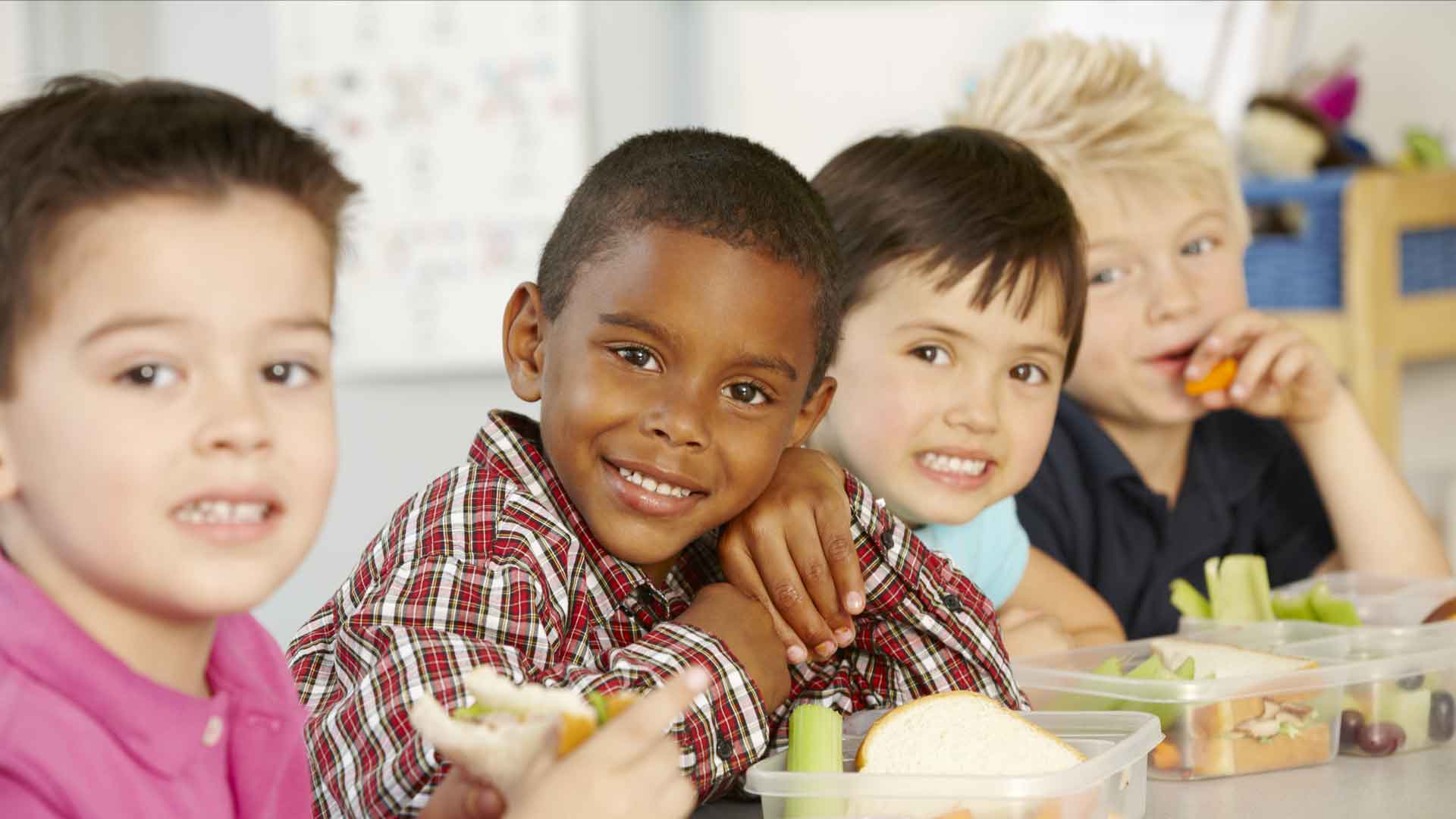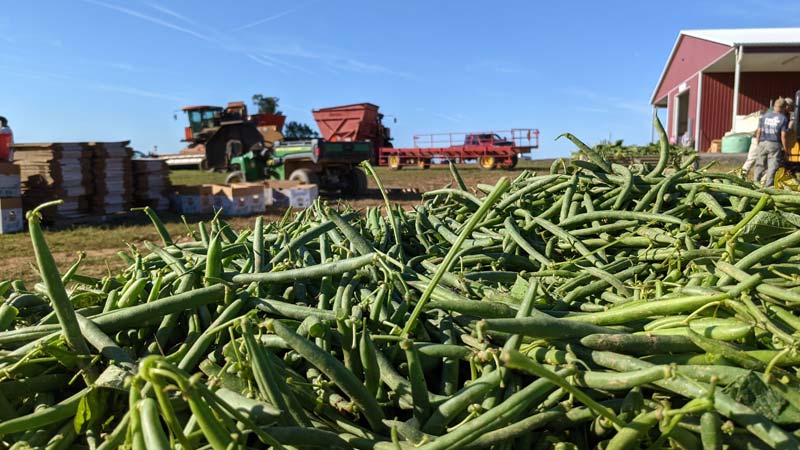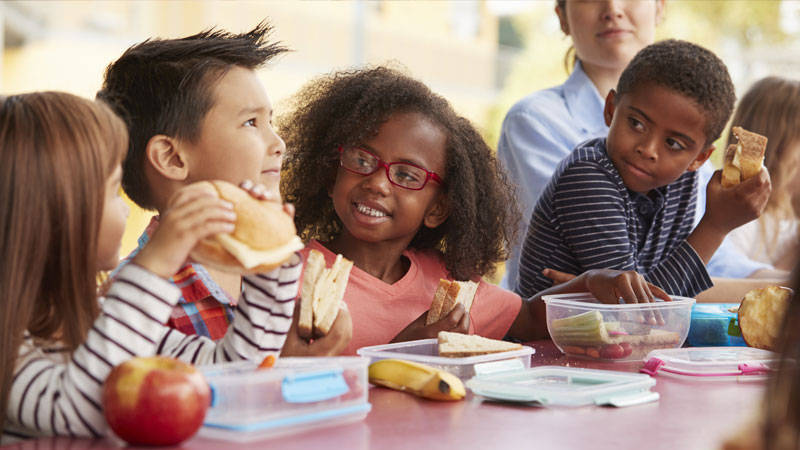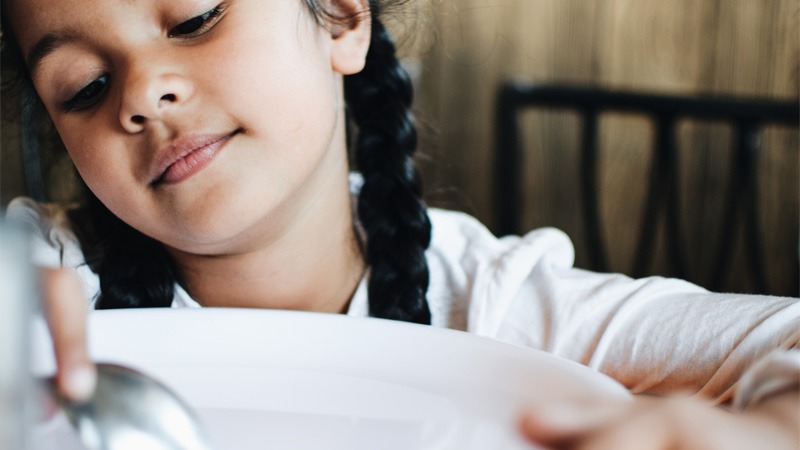How Federal Programs Are Helping Hungry Children in Maryland

Food-Insecure Children: A National Crisis
Food insecurity has profound effects on children. Hungry kids face a wide range of consequences when they don’t have enough to eat, including physical and mental health problems, developmental and behavioral issues, and decreased academic performance. As the COVID-19 pandemic shut down schools — and the access to school breakfast and lunch programs they provide — children were especially at risk.
Fortunately, food banks and private charities have stepped up their efforts to address this growing disparity by innovating and expanding their programs in response to the COVID crisis. Here at the Maryland Food Bank, we’ve distributed enough food to provide roughly 72 million meals to food-insecure Marylanders from March 2020 to August 2021 — an 82% increase over the prior 18-month period.
But organizations like ours, no matter how agile and flexible, cannot address the enormity of the hunger crisis alone. The pandemic required innovative approaches, and the government responded with bold new federal programs as well as expansive and historic changes to existing programs. Emerging data suggests that the impact of these programs over the course of the last year and a half has been critical in lifting many children — at least temporarily — out of poverty.
As some of the programs and their expansions expire, we are increasingly concerned that many children will again face the specter of food insecurity.
The pandemic required innovative approaches, and the government responded with bold new federal programs as well as expansive and historic changes to existing programs.

Federal Programs Ramp Up the Fight Against Hunger
Early on in the pandemic, the Trump administration, as part of the $19 billion Coronavirus Food Assistance Program (CFAP), announced the Farm to Families Food Box Program to provide boxes of fresh produce, dairy, and meat to food banks and other community organizations at no cost.
The U.S. Department of Agriculture (USDA) purchased these high-quality foods from farmers, ranchers, farm associations, and distributors, which was then packaged in family-sized boxes and distributed by MFB through our network of community partners.
The program, which distributed 9.5 million pounds of healthy food to Maryland children and their families, was instrumental in bridging the nutritional gap between food-insecure communities and their access to healthy food before ending in May, 2021.
Even before the pandemic, Maryland children received meals and snacks through several federal programs run by the USDA, including the Child and Adult Care Food Program (CACFP) and Summer Food Service Program (SFSP). As COVID closed schools and kids lost access to free and low-cost breakfasts and lunches, however, the federal government issued waivers loosening regulations and the programs’ eligibility requirements.

MFB’s Supper Club (as part of CACFP) and Summer Club (as part of SFSP) previously provided nourishment to kids outside of the school environment, but the relaxed requirements allowed the program to expand significantly during the pandemic.
“The USDA waivers helped us feed many more kids because instead of just breakfast and lunch, we were able to provide dinner and a snack, too,” said Kelly Salters, director of meals and logistics for MFB’s FoodWorks program.
“And before the pandemic, kids used to have to eat at the location where the food was prepared. That became a problem when COVID hit, since so many sites were unable to open their doors. But the waiver allowed us to provide prepared Grab & Go meals so the children could pick up their food and take it home.”
“The USDA waivers helped us feed many more kids because instead of just breakfast and lunch, we were able to provide dinner and a snack, too.”
Salters also lauded the USDA for expanding the program’s outreach. “We could now feed any child under the age of 18, not just those enrolled in free and reduced meal programs. Any child who showed up could get food.”
From March 2020 through August 2021, more than 680,000 Grab & Go meals have kept Maryland kids and their families fed. But Salters notes the uncertainty ahead. “I hope the waiver that allows us to feed every child does not go away. Every child deserves to be fed.”
Expansions to SNAP
The Supplemental Nutrition Assistance Program (SNAP), probably the most well-known USDA federal food assistance program, provides monetary support to millions of low-income families.
In March 2020, Congress passed the Families First Coronavirus Response Act, giving states the option to modify administrative procedures and make SNAP easier to access. Later, in December 2020, the COVID Relief Plan increased the maximum SNAP benefits by 15%. In Maryland, that emergency allotment meant four-person households received an additional $102 per month to buy food.
“The emergency SNAP allotments have had a significant impact on hunger,” said Lucas Bradley, government programs coordinator at MFB. “It bumped everyone up to the maximum benefit based on number of persons in their household, regardless of income. It really put a lot of people on a much sounder footing.”

Even better news for food-insecure families came in August of 2021, when the USDA re-evaluated its Thrifty Food Plan to address criticisms that SNAP benefits were insufficient to provide adequate food and nutrition. In response, the Biden administration permanently increased the average benefits by more than 25% for all SNAP recipients — the largest increase in the program’s history, and a boost that will enable families to achieve much higher levels of food sufficiency and nutrition.
“The 25% was a big step in the right direction,” Bradley explained. “It will help a lot of families, and we’re excited about it and glad that it’s permanent.”
Pandemic Electronic Benefit Transfer (P-EBT)
Another response to school closings, the Pandemic Electronic Benefit Transfer (P-EBT), allowed states to provide loaded EBT cards — blank debit cards front-loaded with funds for purchasing food — to all families with children missing in-person schooling and childcare. The cards provided additional means for food purchases across wide demographics, not only SNAP recipients.
“The P-EBT benefits reached even more people, including those who weren’t receiving SNAP, because families didn’t need to apply — it was just sent out to them” said Chris Speedie, MFB’s manager of client services. “It was heartening to see how much it helped children across the state, especially since it continued over the summer.”
Like Salters, however, Speedie fears what will happen when federal benefits expire — which could come as soon as November. “We’re going to see a major increase in people reaching out for help when the emergency programs end. Many food-insecure Marylanders are facing a steep food cliff.”

Child Tax Credit
The Biden administration also moved quickly to help families hit hard by the once-in-a-century pandemic by making a major change to the U.S. tax code.
Monthly IRS Child Tax Credit Program payments, first issued in July 2021 as part of the $1.9 trillion American Rescue Plan, provided direct financial assistance to low- and middle-income families. Thirty-nine million households — more than 90% of American families with children — received monthly, no-strings-attached cash assistance of up to $300 per child. In Maryland, 1.1 million families were projected to benefit from the payments.
A recent analysis of U.S. Census Bureau data shows that nearly half of recipients used the assistance to buy food. According to the Center for Budget and Policy Priorities, the new tax credits alone are expected to lift 52,000 Maryland children above the poverty line.
Federal Aid Makes a Difference
Although the USDA’s food and nutrition assistance spending reached a historic high of $122 billion in 2020 — a 32 percent increase over the previous year — many food policy experts believe that the massive federal spending during the pandemic staved off a national hunger catastrophe.
Waivers allowing flexibility in SNAP administration eliminated bureaucratic hurdles that prevented families from accessing needed food while direct cash assistance provided immediate access to money for food purchases without the delays typically associated with federal aid.
“We’re going to see a major increase in people reaching out for help when the emergency programs end. Many food-insecure Marylanders are facing a steep food cliff.”
MFB’s Senior Director of Government Relations Anne Wallerstedt is encouraged by the recent federal program expansions.
“The American Rescue Plan, in particular, is a once-in-a-generation opportunity to address not just food insecurity, but the systemic causes that keep so many people stuck in poverty,” she said. “The federal programs, combined with the work we’re doing at the Maryland Food Bank, have a real potential to accelerate efforts to end hunger in Maryland.”
Our own data supports her guarded optimism. In a first for the food bank, MFB’s Strategy Group will soon release a new research report that looks at the impact pandemic benefits have had on the demand for charitable food since COVID-19 first emerged. Conducted by Vice President of Learning, Measurement, and Evaluation Daniel Sturm, the report shows that fewer Marylanders sought out food assistance when state and federal governments expanded their public benefits. Conversely — and more troubling — when federal and state pandemic relief benefits expired, demand for food went up.
An Uncertain Future for Hungry Children
With many COVID relief programs soon drawing to a close and the Child Tax Credit Program set to expire at the end of 2021, hunger experts fear any gains in food security will be short-lived.
“We’re starting to see worrisome trends,” said Sturm, who is already working on the next research brief. “Food insecurity rates for all Maryland households we surveyed, across all income brackets, doubled in August.”
The Maryland Food Bank and other charitable organizations has proved indispensable over the last 18 months, but without bold, historic federal interventions, many more children and families would have endured far greater hardship.
This critical government/private partnership must continue to grow and innovate if we really want to end hunger for more of Maryland’s children and families.
We Need Your Help
Programs, campaigns, and educational outreach at the Maryland Food Bank has always relied on the philanthropic support of charitable individuals like you.
Much like our food distribution efforts, outreach activities at the Maryland Food Bank rely on generous donations of money and time.
We hope you’ll consider a contribution.







